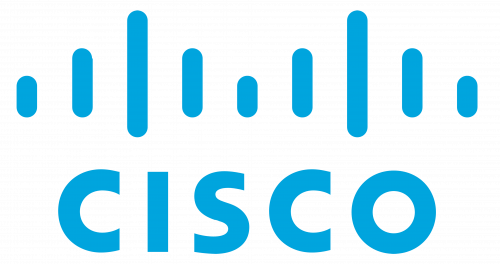Cosa imparerai
Il corso Cisco SPVI – Implementing Cisco Service Provider VPN Services fornisce le competenze per gestire ambienti VPN (Virtual Private Network) per clienti terzi, basandosi su una rete condivisa MPLS (Multiprotocol Label Switching) amministrata da un service provider.
Attraverso laboratori pratici, si consoliderà la comprensione dei fondamenti delle VPN MPLS di Livello 2 e 3, inclusi concetti, vantaggi e classificazione, oltre ad acquisire competenze in merito a componenti MPLS, operazioni del piano di controllo e del piano dati, routing MPLS VPN con VRF (Virtual Routing and Forwarding).
Il corso affronta anche l’implementazione di VPN MPLS con IPv6, VPN multicast IP e VPN per servizi condivisi. Vengono inoltre esplorate soluzioni per implementare VPN MPLS tra più domini di service provider, migliorando l’utilizzo della larghezza di banda della rete.
Inoltre, il corso consente di ottenere 40 crediti Continuin Education (CE) per il rinnovo delle certificazioni Cisco in proprio possesso.
Cosa aspettarsi dall’esame
✔️ Al completamento del corso potrai sostenere l’esame 300-515 Implementing Cisco Service Provider VPN Services (SPVI). Superando questa prova, otterrai la certificazione Cisco Certified Specialist – Service Provider VPN Services Implementation e soddisferai il requisito dell’esame concentration per la certificazione CCNP Service Provider. L’esame 300-515 SPVI certifica le competenze nell’implementazione dei servizi VPN di un provider, inclusi VPN Layer 2, Layer 3 e IPv6.
Destinatari
- Network administrators
- Network engineers
- Network supervisors
- Network managers
- Network Operations Center (NOC) personnel
- Network designers
- Network architects
- Channel partners
Area tecnologica
- Service Provider
Panoramica del corso
Obiettivi
Al termine del corso sarai in grado di:
✅ Descrivere i concetti e il funzionamento delle VPN in un ambiente Service Provider
✅ Implementare operazioni Layer 3 MPLS VPN in un contesto Service Provider
✅ Implementare servizi Layer 3 MPLS VPN inter-dominio tra più provider
✅ Implementare operazioni multicast MPLS VPN Layer 3 in ambienti Service Provider
✅ Risolvere problemi comuni in ambienti Layer 3 MPLS VPN
✅ Implementare operazioni Layer 2 VPN in un ambiente Service Provider
✅ Diagnosticare problemi Layer 2 VPN nella una rete di un provider
✅ Implementare soluzioni MPLS VPN per ambienti IPv6
✅ Risolvere problematiche relative a soluzioni MPLS VPN su IPv6
Prerequisiti
Prima di seguire questo corso, dovresti possedere competenze professionali nel campo Service Provider.
Per acquisire le basi necessarie a seguire questo corso si consigliano i seguenti percorsi formativi:
📌 Implementing and Administering Cisco Solutions (CCNA)
📌 Understanding Cisco Service Provider Network Foundations (SPFNDU)
📌 Implementing and Operating Cisco Service Provider Network Core Technologies (SPCOR)
Outline
- Introducing VPN Services
- VPN Fundamentals
- MPLS VPN Control Plane Operation
- Troubleshooting MPLS VPN Underlay
- Troubleshoot Core Interior Gateway Protocol (IGP)
- Troubleshoot Border Gateway Protocol (BGP)
- Implementing Layer 3 MPLS VPNs
- Multiprotocol BGP (MP-BGP) Routing Requirements in MPLS VPNs
- Provider Edge to Customer Edge (PE-to-CE) Routing Requirements in Layer 3 MPLS VPNs
- Implementing Layer 3 Interdomain MPLS VPNs
- Inter-Autonomous System (AS) for Layer 3 MPLS VPNs
- Content Security and Control (CSC) for Layer 3 MPLS VPNs
- Implementing Layer 3 Multicast MPLS VPNs
- Multicast VPN (MVPN) Fundamentals
- Implement Intranet MVPN
- Troubleshooting Intra-AS Layer 3 VPNs
- Troubleshoot PE-CE Connectivity
- Troubleshoot PE-to-Route Reflector
- Implementing Layer 2 VPNs
- Layer 2 Service Architecture and Carrier Ethernet Services
- Refresh on Traditional Ethernet LAN (E-LAN), E-Line, and E-Tree Solutions
- Troubleshooting Layer 2 VPNs
- Troubleshoot Common Issues for Traditional E-Line, E-LAN, and E-Tree Ethernet Solutions
- Troubleshoot Common Issues for Ethernet VPN (EVPN) Native, EVPN Virtual Private Wire Service (VPWS), and EVPN Integrated Routing and Bridging (IRB) Solutions
- Implementing Layer 3 IPv6 MPLS VPNs
- Classical Solutions for Deploying IPv6 over IPv4 Environments
- Using 6VPE to Deploy IPv6 Connectivity over MPLS Environment
- Troubleshooting Layer 3 IPv6 MPLS VPNs
- Troubleshooting PE-to-PE Connectivity
Lab Outline
- Verify the Service Provider Backbone Operation for MPLS VPN
- Work with VRF Instances
- Troubleshoot the MPLS VPN Backbone
- Configure MP-BGP as the PE-CE Routing Protocol
- Configure and Verify PE-to-CE Routing Requirements
- Enable Shared Services VPN
- Deploy Internet Access as a VPN Service
- Troubleshoot Layer 3 MPLS VPN End-Customer Connectivity
- Implement Different EVPN Solutions
- Troubleshoot EVPN VPWS
- Implement IPv6 VPN Provider Edge Router (6VPE)



